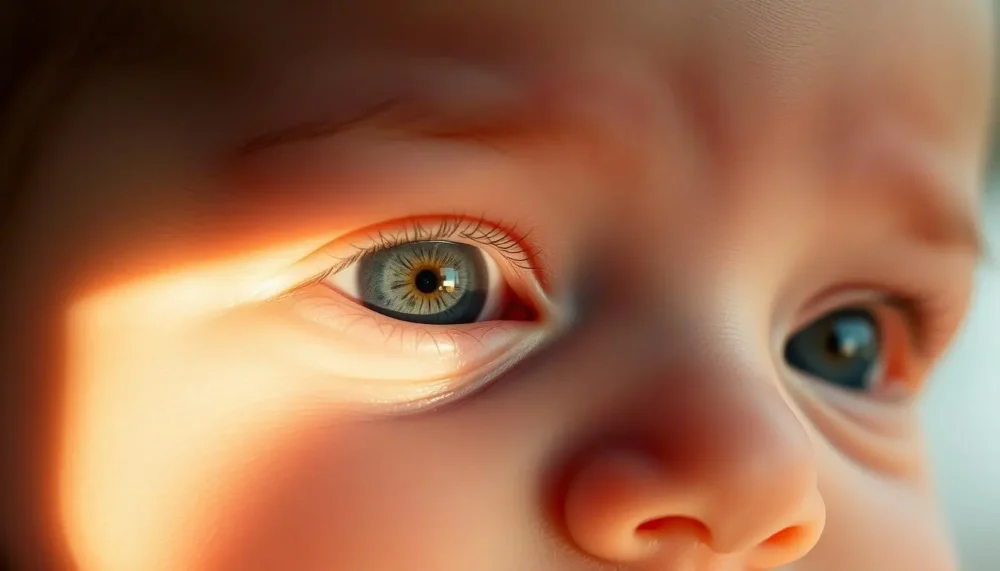When Do Babies Start Teething? 7 Soothing Signs to Watch

Parents often wonder when their baby’s first tooth will appear. The infant teething process varies, causing many to ask, “When do babies start teething?” NYC pediatricians explain that while most babies get their first tooth between 4 to 7 months, timing can differ widely. This guide combines expert insights to help parents understand signs, manage discomfort, and separate myths from facts.
Every baby’s journey is unique, but recognizing patterns in the infant teething process reduces anxiety. This article covers the typical timeline, common symptoms, and proven methods to ease discomfort. It also addresses when to seek medical advice and clarifies misconceptions about teething-related health issues.
Key Takeaways
- Teething timelines vary, but most infants begin between 4 to 7 months.
- NYC pediatricians highlight common signs like gum swelling and irritability.
- Safe remedies and when to consult a doctor are covered in detail.
- Myths about fever and teething are debunked using research-backed advice.
- The article guides parents through every stage of the infant teething process.
The Typical Timeline: When Do Babies Start Teething
Every baby’s journey to their first tooth is different. Knowing the teething age range helps parents prepare for this big milestone. Most babies get their first tooth between 4 to 7 months. But, this time can range from 3 months to over 12 months.
Genetics often play a big role in when a baby starts teething. So, if your family has a history of early or late teethers, your baby might follow suit.
Average Age Range for First Teeth
The average when do babies start teething is 6 months. But, it’s normal for babies to start teething at different times. By 12 months, 90% of babies have at least one tooth.
Pediatricians say that early or late teething usually doesn’t mean there’s a health problem. Unless there are other signs of developmental delays.
Early and Late Teethers: What’s Normal
- Early teething: Teeth appearing before 3 months might surprise parents. But, it’s not usually a cause for concern.
- Late teething: Babies over 12 months without teeth should see a pediatrician. This is to check for rare conditions.
Genetics are a big factor. Parents who teether early or late often see the same in their kids.
Order of Tooth Eruption
- Lower central incisors (bottom front teeth) emerge first.
- Upper central incisors follow, then lateral incisors on both sides.
- Molars and canines come next, completing the 20 primary teeth by age 3.
This baby teething timeline might vary, but the order stays the same. Keeping track of this helps parents see how their baby is growing. It helps them not worry too much about small delays.
Common Signs Your Baby Is Teething
Knowing the signs of teething in infants is key for parents. Babies often show physical and behavioral changes when teeth start coming in. Look for more drool, which can cause chin rashes if the skin stays wet.
Swollen or red gums, around the teeth coming in, are clear signs. Some babies may tug at their ears or rub their cheeks. This is because they feel pain in their gums.

Behavioral changes are also common. Babies might get fussier, have trouble sleeping, or not want to eat. This is because sucking hurts them, but chewing on things can help.
NYC pediatricians say these signs can vary a lot. One baby might cry every night, while another sleeps well even with many teeth coming in. But, fever and diarrhea are not signs of teething. Always check with a doctor if these happen.
- Physical cues: Drool, gum swelling, cheek/ear touching
- Behavioral cues: Irritability, sleep disruptions, chewing objects
- Key reminder: Not all babies show obvious teething symptoms; some might not show much discomfort
Watch for changes over time to see if they’re related to teething. Give clean, cold teethers for relief. If your baby’s discomfort is too much, talk to a pediatrician.
Teething Symptoms vs. Illness: How to Tell the Difference
It’s important to know the difference between teething symptoms and illness. Signs of teething in infants include swollen gums, lots of drooling, and being fussy. But, if symptoms are severe, they need serious attention.
New York City pediatricians say teething symptoms don’t cause high fevers or diarrhea. Here are some signs to watch out for:
When to Contact Your Pediatrician
- Fever over 100.4°F (38°C)
- Diarrhea lasting more than a day
- Refusal to eat or drink
- Rash or swelling beyond the gums
- Unusual lethargy or crying
Fever and Teething: Myths and Facts
Myth: Teething causes high fevers. Fact: Mild temperature rises (under 100.4°F) might happen, but true fevers mean you’re sick. NYC doctors say don’t ignore infections because of teething myths.
- Watch for fever spikes—these need quick doctor visits.
- Keep an eye on symptoms like vomiting or coughing, which mean you’re sick.
- Always talk to a doctor if you’re unsure.
Acting fast can stop bigger problems. Don’t think severe symptoms are just signs of teething in infants. Trust your gut and get help right away.
The Complete Baby Teething Timeline from 0-3 Years
Knowing the infant teething process is key for parents. Here’s a guide to the baby teething timeline, with important milestones:
- Months 6-10: Lower central incisors (bottom front teeth) emerge first.
- Months 8-12: Upper central incisors (top front teeth) follow.
- Months 9-13: Lateral incisors on both sides finish the front teeth set.
Second and Third Year Patterns
- 13-19 months: First molars (back teeth) appear, aiding chewing.
- 16-22 months: Canines emerge, causing sharp discomfort.
- 23-33 months: Second molars complete the primary teeth set.
When All Baby Teeth Should Arrive
By age 3, most kids have 20 primary teeth. Some may finish by 24 months, others by 36 months. If no teeth appear by 18 months or gaps are too big, see a pediatrician. Tracking the teething age range helps spot issues early.
Use this timeline as a guide, but remember, every baby is different. Regular dental visits are important for proper growth and alignment during the infant teething process.
Effective Teething Remedies Recommended by Pediatricians
Pediatricians suggest teething remedies for infants that are safe and help with pain. For baby teething discomfort, they recommend FDA-approved medicines like infant acetaminophen or ibuprofen for babies over six months. Always check the dosage based on age and weight, and talk to a doctor before giving it to your baby.
- Medicated Options: Use the right amount of acetaminophen or ibuprofen as a pediatrician suggests. Don’t give aspirin to babies because it’s not safe.
- Cold Relief: Chill a clean, silicone-based teething ring or a damp washcloth. Cold helps numb sore gums without harm.
- Massage Techniques: Rub your baby’s gums with a clean finger for 2–3 minutes. This can help ease the pain.
Don’t use gel-numbing products with benzocaine because they can cause breathing problems. Hard plastic toys or frozen items can be dangerous. Stick to items made from FDA-recognized materials like medical-grade silicone. Always watch your baby when they use teething tools to avoid choking.
Look for top-rated products like FDA-cleared silicone teethers and FDA-approved pain relievers. Using these methods and watching your baby closely can help keep them safe. If your baby’s pain doesn’t go away, call your pediatrician for advice.
Soothing Techniques for Baby Teething Discomfort
Managing baby teething discomfort often requires calm, hands-on care. Pediatricians in NYC recommend these evidence-backed teething remedies for infants to ease sore gums and irritability.
Gentle Gum Massage Methods
Apply light pressure to gums using clean fingers, a moist gauze pad, or a silicone finger brush. Gently rub in circular motions for 2–3 minutes. This counteracts pressure from emerging teeth. Many pediatricians suggest massaging twice daily to reduce swelling.
Temperature Therapy: Cold vs. Warm
| Method | Cold Therapy | Warm Therapy |
|---|---|---|
| Examples | Cooled (not frozen) teething rings, chilled applesauce | Warm washcloth to suck on, gentle cheek massage with warmed hands |
| Benefits | Numbs gums, reduces inflammation | Relaxes facial muscles, eases overall tension |
| Safety Tips | Avoid ice; supervise use of objects | Ensure warmth isn’t hot to the touch |
Distraction Techniques That Work
- Sing nursery rhymes or clap hands to shift focus
- Offer favorite toys or books during fussy moments
- Take a walk or change environments to reset their mood
Combine these approaches based on your baby’s cues. Always prioritize safety—avoid hard toys and never force feeding during massages.
What to Avoid: Outdated or Unsafe Teething Treatments
When looking for ways to soothe a teething baby, safety is key. Some old or trendy methods can be risky. It’s important to check them carefully.
FDA Warnings on Teething Products
Health agencies have set rules to keep babies safe from harmful products:
- Benzocaine gels (e.g., Orajel, Orabase): Linked to methemoglobinemia, a blood disorder. The FDA advises avoiding all benzocaine products for children under 2.
- Amber teething necklaces: Recalled by the FDA in 2020 due to choking and strangulation risks. The CDC reports 12 infant deaths tied to these products.
- Homeopathic teething tablets: Hyland’s tablets were recalled in 2010 for inconsistent belladonna levels, which can cause seizures. FDA warns against all homeopathic teething products.
Alternative Medicine Claims: What Research Shows
Many “natural” remedies are not backed by science:
| Remedy | Common Claims | Scientific Findings |
|---|---|---|
| Essential oils | Calms gums | Risk of ingestion; no proven benefit (AAP 2022) |
| Herbal supplements | Promotes “natural healing” | Unregulated ingredients; possible toxicity |
| Freeze-dried fruits | Healthy alternative to teething toys | Choking hazard for infants |
Use safe methods like gum massage with clean fingers or chilled teethers. Always talk to a pediatrician before trying new remedies.
Caring for New Teeth: When to Start Oral Hygiene
Start oral hygiene early, even before your baby’s first tooth. Clean their gums with a soft cloth after feedings to stop bacteria. This gets them ready for brushing when teeth come in.
- Begin with a damp cloth or gauze to wipe gums daily.
- Once teeth appear, use a soft-bristled infant toothbrush with a rice-sized smear of fluoride toothpaste.
- Brush twice daily, focusing on newly erupted teeth and gum areas.
Hold your baby securely, supporting their head while brushing. This makes them feel safe and builds trust. The first dental visit should be by age one or six months after the first tooth comes in. Pediatricians check the baby teething timeline and watch for early decay.
Make brushing a calm routine—sing songs or use a mirror to engage them. Choose fluoride toothpaste carefully, following pediatric dentist advice. Early habits in oral care lay the foundation for lifelong dental health. Follow these steps to help your baby smoothly go through teething and develop good oral care habits.
The Connection Between Teething and Sleep Disruption
Teething can make it hard for babies to fall and stay asleep. The pressure from new teeth and swollen gums gets worse when they lie down. Parents might see more crying at night or babies waking up a lot.
Spotting signs of teething in infants like red cheeks or swollen gums can help fix sleep issues. An evening routine that eases baby teething discomfort can help everyone get better rest.
Creating a Soothing Bedtime Routine
Make a calming routine to get babies ready for sleep when they’re teething. Try these steps:
- Warm baths to relax muscles and reduce gum swelling.
- Gentle gum massage with clean fingers to ease pressure.
- Soft lullabies or stories to distract from discomfort.
Managing Nighttime Discomfort
When night wakings occur, use these strategies:
- Apply a small dose of infant pain reliever (like acetaminophen) before bed, following dosage guidelines.
- Place a chilled (not frozen) teething toy in the crib for nighttime gnawing.
- Comfort with patting or white noise without picking up the baby to maintain sleep independence.
Most sleep issues get better once teeth come in. But sticking to routines helps babies deal with it until then.
Conclusion: Navigating Your Baby’s Teething Journey
Knowing when babies start teething is key for parents. Babies usually start teething between 4 to 7 months. By age 3, they have all 20 primary teeth. Signs like drooling and gum swelling mean it’s time to help.
Safe ways to ease pain include chilled teething rings and gentle gum massages. NYC pediatricians suggest these methods. Always choose FDA-approved products to keep your baby safe.
Teething can upset sleep and routines. But, soothing techniques and a calm space help. Start oral hygiene early, like gum cleaning before teeth come in. If your baby has a high fever or fusses a lot, see a doctor.
Every baby teething journey is different. Following medical advice and regular dental visits helps. Focus on safety, comfort, and routine to make teething easier. This way, you support your child’s oral health and development.
FAQ
When do babies start teething?
Babies usually start teething between 4 to 7 months old. But, it can start as early as 3 months or as late as 12 months. The exact time depends on many factors, like genetics.
What are the common signs of teething in infants?
Teething signs include a lot of drooling, swollen or red gums, and rubbing their cheeks. They might also pull their ears, get irritable, and have trouble sleeping. Some babies want to chew on things more than usual.
Are there any effective teething remedies for infants?
Pediatricians suggest using cold teething rings, wet washcloths, and pain relievers like infant acetaminophen or ibuprofen. Always check with your pediatrician for the right dosage and advice.
How can I tell if my baby’s discomfort is due to teething or illness?
Mild irritability and drooling are normal teething signs. But, high fevers, severe diarrhea, or big changes in behavior might mean they’re sick. If you’re not sure, call your pediatrician.
What is the typical teething age range?
Teething usually starts at 3 months and can last until 3 years. Babies often get their first teeth by 7 months. They usually have all 20 primary teeth by age 3.
What are some signs of teething discomfort?
Teething discomfort signs include being irritable, drooling a lot, and having trouble sleeping. They might also eat less and chew on things more. Each baby is different, and some may feel more discomfort than others.
What should I avoid when my baby is teething?
Don’t use old or unsafe teething treatments like benzocaine gels or amber necklaces. They can be harmful. Always choose remedies your pediatrician recommends and ask for safety advice.
How can I maintain my baby’s oral hygiene during teething?
Start oral hygiene early by gently wiping your baby’s gums. When teeth come in, use a soft-bristled toothbrush and a small amount of toothpaste. Brush twice a day.
How does teething affect my baby’s sleep?
Teething can make it hard for your baby to sleep because of discomfort and irritability. They might wake up a lot at night. A soothing bedtime routine and having teething toys ready can help.
When should I consult a pediatrician regarding teething?
See a pediatrician if your baby has a high fever, is very irritable, has severe diarrhea, or shows big changes in behavior. They can tell if you need to do more to help your baby.






